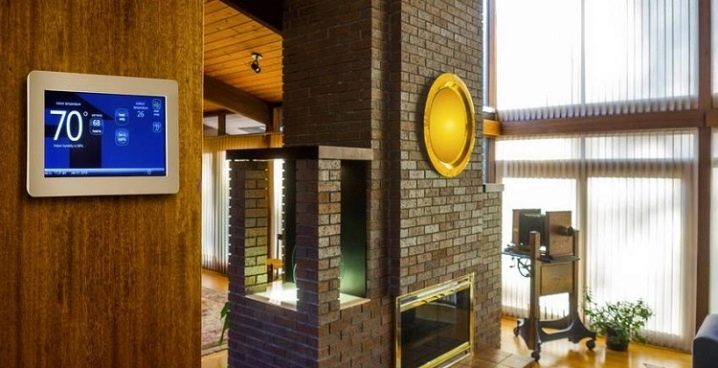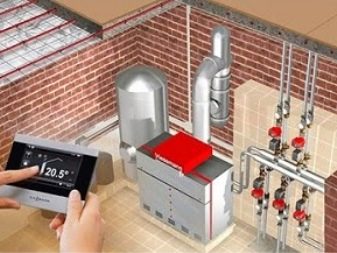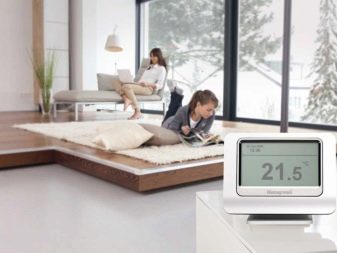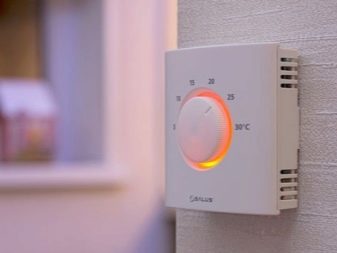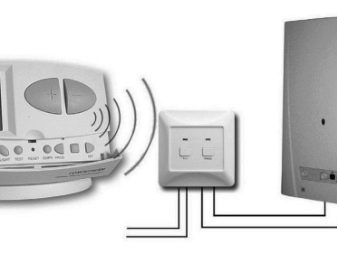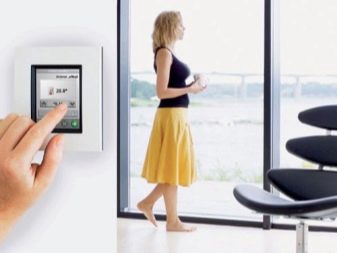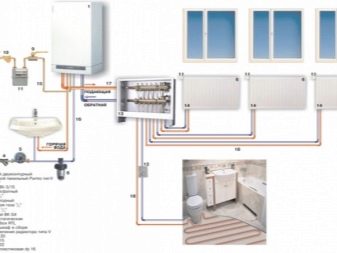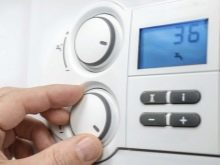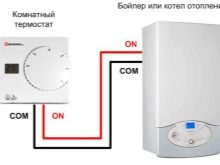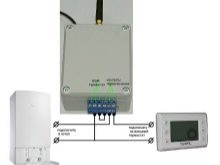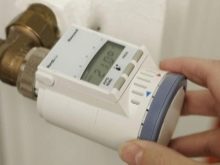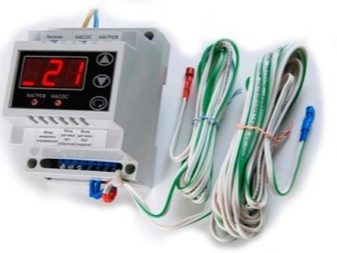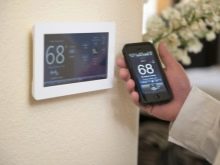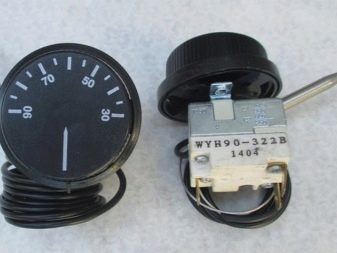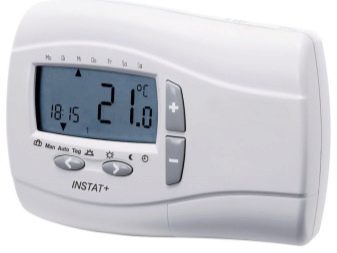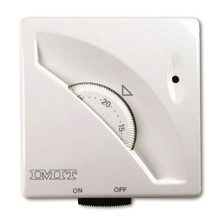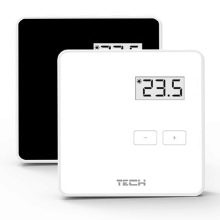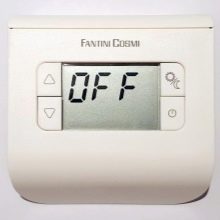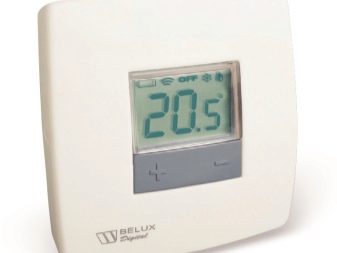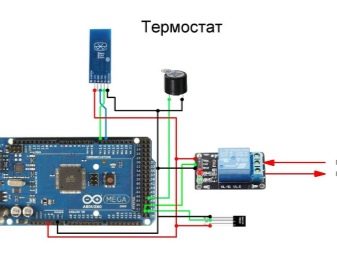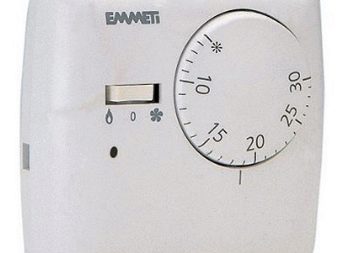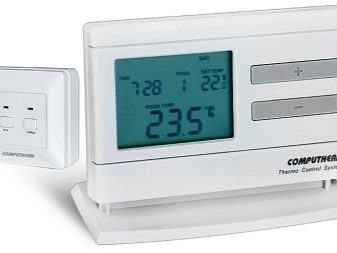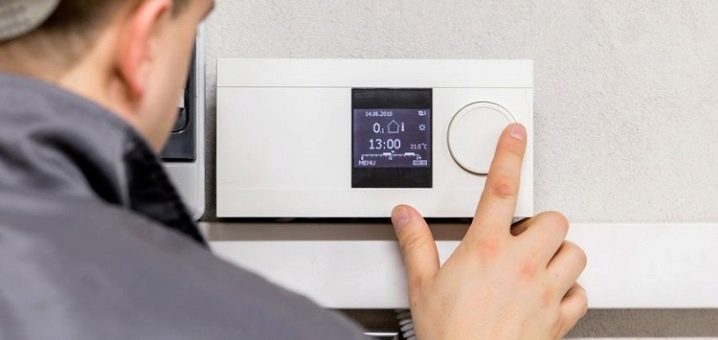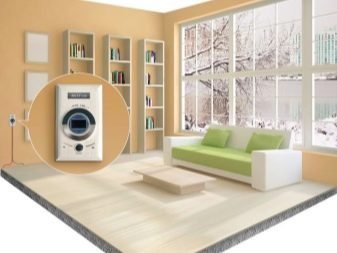Room thermostats for gas boilers: technical characteristics, types and features of operation
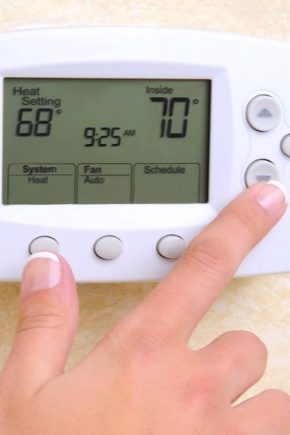
When operating a heating boiler and heating equipment, it is desirable to use fuel and electrical energy efficiently. At the same time the room should be a comfortable temperature. To do this, you need to install a room thermostat for floor or wall-mounted gas boiler. In this article we consider the main characteristics of the device.
Device purpose
With a significant overheating, the boilers can switch off independently, because special regulators are provided for this purpose in the heating equipment, which react to changes in the temperature of the heat carrier in the heat exchanger.But with a rapid increase in temperature and location at some distance from the boiler, they may not work in time. In this situation, only local fuses will help. They are special thermostats. They instantly signal the danger of overheating batteries (radiators), so do not worry about emergency overheating of the heating elements.
Room thermostat for gas heating with automatic function eliminates manual adjustment of the boiler. After all, when the on and off of the heating equipment occurs manually, the function of heating the water takes a short time - a maximum of 10 minutes. This leads to significant wear on the heating equipment.
The boiler in the operating mode heats the water, which then circulates through the batteries (radiators). In this situation, the temperature and pressure in the heating equipment may exceed the permissible rate, which will cause a malfunction, an accident.
Special thermal sensors function in automatic order. They are configured to the desired parameters. Devices can even be programmed for any days and hours.Therefore, the temperature parameters in the room will meet the required at any time. The regulator will autonomously select the economical order of heating. In this case, he will take into account the weather and other nuances.
When cooling the air in the room below the norm, the sensor gives a signal. After that, the gas burner starts. When the room is heated to a predetermined temperature, the device automatically signals the need to turn off the heating. Gas burner stops operation.
Room thermostats are more efficient than devices located in a heat generator. After all, the installed sensors on the boiler and batteries (radiators) do not take into account the temperature of the heated atmosphere in the room. Therefore, it is recommended to locate temperature controllers that monitor the air parameters.
These devices save fuel consumption up to 20%. Also significantly reduced the cost of electrical energy. At the same time the equipment is more carefully operated.
Principle of operation
Manual adjustment of the heating system does not guarantee that the room will not freeze on cold days. Therefore, it is advisable to use automatic thermostats.They monitor the parameters of the heated room and react to the temperature. The temperature controller adjusts itself to optimum performance. After that, the device will independently turn on and off the device at the right time.
To operate the thermostat need an electrical network or batteries. There are certain models that combine both options. This is advantageous when there is a power outage, in this case the device operates from a battery, which ensures autonomous operation. This is a very important function, because if there is a problem with the supply of electricity, the heating system will still work in the right mode.
Let us examine the principle of operation of the temperature controller. It has metal plates that have different linear expansion coefficients. They function as electrical contact. There is a deformation of the metal plates, as a result, the connection circuit is opened. This closes the valve.
When the temperature inside the room rises above the specified parameters, the contact drops. In this connection, the fuel supply is interrupted, the boiler is stopped. Batteries (radiators) begin to cool naturally.At the same time they give heat to the room, which is heated.
Species
When the temperature in the batteries (radiators) drops to a predetermined parameter, the metal plates in the thermostat close the connection circuit. The valve opens immediately. Fuel is fed into the boiler, and it begins to function.
If heating devices overheat, this can damage the valve and the fuse. Therefore, after such cases, it is necessary to check these items of equipment.
To maintain the temperature in the room, various regulators are used. They are also controlled in different ways: with the help of a pen, a touch screen or buttons on the panel. On the variety of thermostats tell on.
Consider the various types of thermostats that are installed indoors.
- Room Airflow affects the functioning of the sensors. In connection with this, it is impossible to place objects nearby that interfere with the circulation of air masses. Regulators do not take into account the heating of water in the heating equipment, and react to the temperature inside the room. They are also used for towel rails.
- Smart. The control units of the devices control the heating devices. With the specified parameters signal to enable or disable the heating fluid. They also monitor the amount of heated water. In case of emergency, turn off the heating system.
- Remote controllers. These are zonal devices that it is desirable to install with special valves. They control the parameters in a separate room using infrared rays. When the specified maximum temperature is reached, the sensor sends a signal to stop heating.
- TRV. Thermostatic valves, which, if necessary, reduce the flow of heated water. This is necessary to prevent deformation and leakage of the heating pipes.
- Cylinder thermostat The device is installed during the operation of a double-circuit boiler. It is usually placed in the heating equipment in front of the batteries (radiators). When the fluid reaches the set maximum temperature, the sensor shuts down the boiler for the programmed time.
Criterias of choice
Thermostats are wired and wireless.
- The first type allows the controller to work with the boiler using a cable.In this case, it is necessary to carry out additional work to connect the elements using wires. It is desirable to hide them with plasterboard sheets or in a special strobe (groove). This method is not very convenient, but reliable. If you purchase a wired temperature controller of a more powerful class, then you may need to replace the old cable to the gas boiler.
- In the wireless thermostat, the heating of the room is controlled by a radio signal. The device consists of two parts. One element is installed at the boiler, the second - in the room where the activity of the heating equipment will be controlled. Both elements are connected by a radio channel. At the same time, the controller for control has either a push-button panel or a touch-sensitive display.
Devices with a wireless connection are more convenient, they are not connected by cable. Their location can be easily changed. In addition, these sensors take up little space in the room.
But they have disadvantages. During operation, interference with radio communications may occur. This also happens when the battery is discharged, in such cases the instruments give a signal. If simple sensors can only maintain the required temperature,These remote programmable thermostats allow you to remotely control the operation of the boiler, monitor the health of the entire heating system.
Programmable external temperature controllers are available, which can be configured for different modes, even for specific times and specific days. There are sensors that have a hydrostat option. They additionally control and regulate the humidity of the atmosphere in the room.
Depending on the regulator, thermostats are mechanical and electronic.
- In the first embodiment, there are special temperature-sensitive elements. Devices with mechanical control have a disadvantage: they give a large error.
- Sensors with an electronic regulator are less than 1 ° C wrong, but for the price they are more expensive.
Different devices and the type of control. There are models of thermostats, where the mode of operation is set on the instrument panel. In modern sensors, you can control the program from a distance using the remote control. Choose a thermostat and boiler preferably from the same manufacturer. You also need to take into account the technical parameters of the device to avoid any downtime of the heating system.
Consider the advantages and disadvantages of thermostats of several well-known companies.
- Imit The Italian company offers mechanical and electronic sensors, which are distinguished by reliability and excellent build quality. The price for them is quite affordable.
- Tech. Wireless modern thermostats. They are easy to manage, have a nice design, intuitive interface. The manufacturer produces programmable and non-programmable sensors.
- Fantini Cosmi. Electronic and mechanical devices of the Italian brand. They have a beautiful design, are available with both simple and complex functions.
- Watts Belux. Reliable mechanical modules from the German manufacturer. Ensure smooth on / off burner.
- Arduino. Programmable analytical controllers. Fully regulate the entire heating system at a high level.
- Emmeti. Compact thermostats with mechanical control. Have indicator sensors.
- Computherm Q7. Temperature controllers of the highest category. Independently analyze and program the procedure for the operation of heating equipment in the room. Managed remotely, can automatically send messages to the phone about the work and settings.
When choosing a sensor, you need to pay attention to the following criteria:
- wired or wireless connection of parts of heating equipment;
- mechanical or electronic control regulator;
- availability of additional sensor functions;
- compatibility of all elements of the heating equipment;
- technical specifications;
- the cost of the device.
After selecting and buying the device you need to install it.
Installation and maintenance
- Electronic thermostat install more difficult. Professional connection and setup of the device will be required. Therefore, it is desirable to provide this work to a specialist.
- Installing a mechanical thermostat is easier. Installation is carried out according to the attached documents, you can do the work yourself. It is recommended to locate the sensor at a height of 1.25-1.5 meters on the inner wall of the room. It is not advisable to place the temperature control outside. The distance from the thermostat to the boiler is usually no more than 10 meters.
- Temperature controller should not be located close to heating equipment and electrical appliances. Sunlight should not fall on it.
- Furniture and other large items should not cover the sensor. There must be easy access to the device.All these nuances affect the thermostat readings.
- After installation according to the enclosed instruction, the temperature controller is set up. It is programmed optimal parameters for on / off. After that, the operability of the sensor is checked. If the connection is correct, the indicator on the instrument will light up.
- You can test the thermostat in automatic order. At an atmospheric temperature of 18 ° C, the heating boiler must be switched off.
- If there are several rooms in the room, then it is recommended to place thermal sensors everywhere. In this case, the door must be closed, it must be done in order to reduce the work of interior radiators (batteries). It is more rational to separately configure the sensors in different parts of the room.
- Thermostats are configured to change the indoor temperature less than 1 ° C, for people, these drops are completely invisible.
- It is necessary to carefully treat these devices, you can not expose them to damage. Any impact and deformation may cause the sensor to malfunction.
Installing room thermostats provides the following benefits for a homeowner:
- automatic mode of operation, the sensor independently controls the operation of the boiler, the gas supply;
- no need to monitor the temperature in the premises, it will be optimal, regardless of the weather outside;
- the consumption of electrical energy will decrease significantly;
- fuel economy;
- careful operation of the heating system;
- prevention of damage to heating devices, accidents, fires.
How to connect the thermostat to the gas boiler, see the following video.


